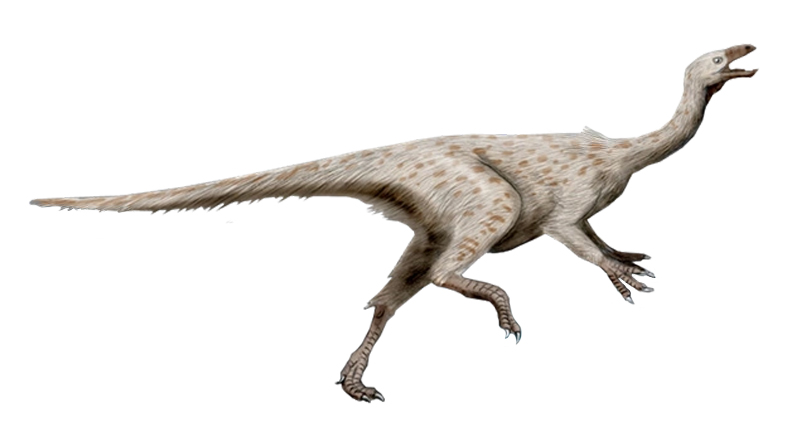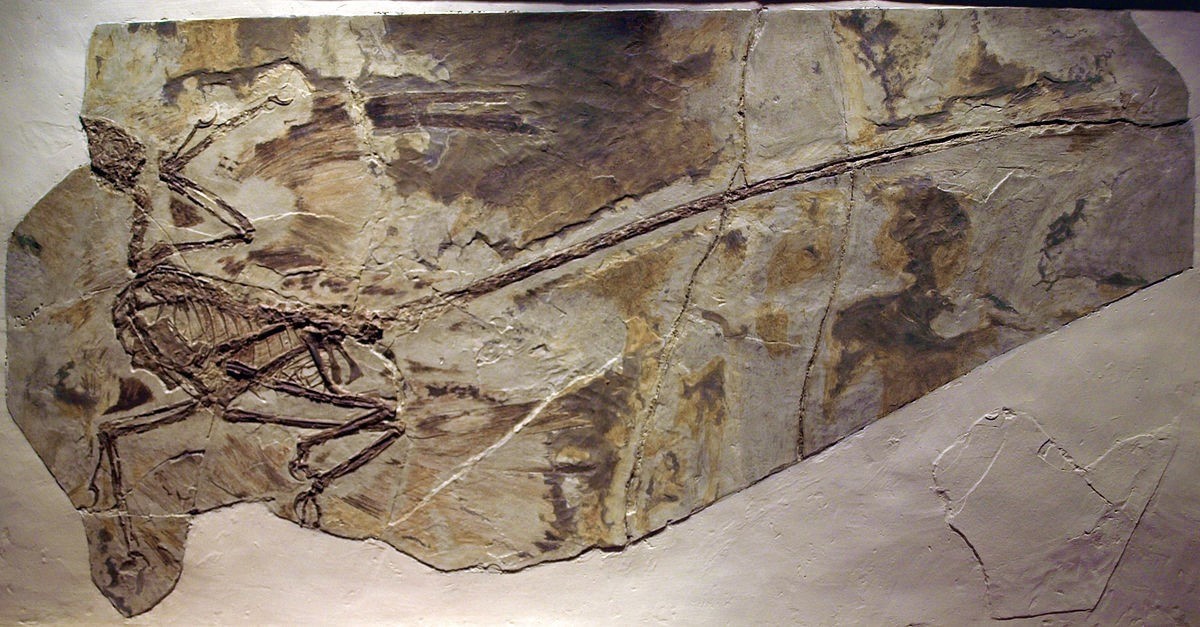|
Tetanurae
Tetanurae (/ˌtɛtəˈnjuːriː/ or "stiff tails") is a clade that includes most theropod dinosaurs, including megalosauroids, allosauroids, tyrannosauroids, ornithomimosaurs, compsognathids and maniraptorans (including birds). Tetanurans are defined as all theropods more closely related to modern birds than to ''Ceratosaurus'' and contain the majority of predatory dinosaur diversity. Tetanurae likely diverged from its sister group, Ceratosauria, during the late Triassic. Tetanurae first appeared in the fossil record by the Early Jurassic about 190 mya and by the Middle Jurassic had become globally distributed. The group was named by Jacques Gauthier in 1986 and originally had two main subgroups: Carnosauria and Coelurosauria, the clade containing birds and related dinosaurs such as compsognathids, tyrannosaurids, ornithomimosaurs, and maniraptorans. The original Carnosauria was a polyphyletic group including any large carnivorous theropod. Many of Gauthier's carnosaurs, such ... [...More Info...] [...Related Items...] OR: [Wikipedia] [Google] [Baidu] |
Cruxicheiros
''Cruxicheiros'' (meaning "cross hand") is a genus of theropod dinosaur which lived in the Middle Jurassic of England. The type species is ''C. newmanorum'', described by Roger Benson and Jonathan Radley in 2010. Discovery The remains of the holotype were discovered in the early 1960s in the Cross Hands Quarry, near Little Compton, Warwickshire, Little Compton, in Warwickshire in England. These fossils came from the Chipping Norton Limestone Formation, which is dated to the lower Bathonian faunal stage, stage of the Middle Jurassic, about 167 mya (million years ago). The fossils were stored in the Birmingham Museum and Art Gallery until 2008 when they were transferred to the Warwickshire Museum Service; the transfer prompted closer study of the neglected fossils. Unrecognized fossils of dinosaurs, many of them theropods, had been discovered in England at least as early as 1677. The larger theropod fossils had been attributed (without critical examination) to ''Megalosaurus'' ... [...More Info...] [...Related Items...] OR: [Wikipedia] [Google] [Baidu] |
Avetheropoda
Avetheropoda, or "bird theropods", is a clade that includes carnosaurians and coelurosaurs to the exclusion of other dinosaurs. Definition Avetheropoda was named by Gregory S. Paul in 1988, and was first defined as a clade by Currie and Padian in 1997, to include ''Allosaurus'', modern birds, and other animals descended from their most recent ancestor. In 1999, Paul Sereno named another group, Neotetanurae, for the clade containing Allosauroidea and Coelurosauria, and excluding other tetanurans such as megalosauroids, but this definition was published slightly later. A monophyletic Avetheropoda is recovered in many papers, however recent findings suggest a monophyletic Carnosauria model with allosauroids and megalosauroids being each other’s closest relatives instead of Allosaurs and Coelurosaurs. Classification The cladogram A cladogram (from Greek ''clados'' "branch" and ''gramma'' "character") is a diagram used in cladistics to show relations among organisms. A cladog ... [...More Info...] [...Related Items...] OR: [Wikipedia] [Google] [Baidu] |
Sinosaurus
''Sinosaurus'' (meaning "Chinese lizard") is an extinct genus of theropod dinosaur which lived during the Early Jurassic Period. It was a bipedal carnivore approximately in length and in body mass. Fossils of the animal were found at the Lufeng Formation, in the Yunnan Province of China. Discovery and naming The composite term ''Sinosaurus'' comes from ''Sinae'', the Latin word for the Chinese, and the Greek word ' () meaning "lizard"; thus "Chinese lizard". The specific name, ''triassicus'', refers to the Triassic, the period that the fossils were originally thought to date from. ''Sinosaurus'' was described and named by Chung Chien Young, who is known as the 'Father of Chinese Vertebrate Paleontology', in 1940. The holotype, IVPP V34, was found in the Lower Lufeng Formation, and consists of two maxillary (upper jaw) fragments, four maxillary teeth, and a lower jaw fragment with three teeth. The teeth are laterally compressed, and feature fine serrations both at their ant ... [...More Info...] [...Related Items...] OR: [Wikipedia] [Google] [Baidu] |
Monolophosaurus
''Monolophosaurus'' ( ; meaning "single-crested lizard") is an extinct genus of tetanuran theropod dinosaur from the Middle Jurassic Shishugou Formation in what is now Xinjiang, China.Holtz, Thomas R. Jr. (2011) ''Dinosaurs: The Most Complete, Up-to-Date Encyclopedia for Dinosaur Lovers of All Ages,'Winter 2010 Appendix./ref> It was named for the single crest on top of its skull. ''Monolophosaurus'' was a mid-sized theropod at about long or more. Discovery and naming A nearly complete skeleton of a theropod new to science was discovered by Dong Zhiming in 1981, during stratigraphic exploration for the benefit of the oil industry. The fossil was not unearthed until 1984. In 1987, before description in the scientific literature, it was referred to in the press as ''Jiangjunmiaosaurus'', an invalid '' nomen nudum''. In 1992 it was mentioned by Dong Zhiming as ''Monolophosaurus jiangjunmiaoi'', and in 1993 by Wayne Grady as ''Monolophosaurus dongi''. These latter names also lacked a ... [...More Info...] [...Related Items...] OR: [Wikipedia] [Google] [Baidu] |
Early Jurassic
The Early Jurassic Epoch (geology), Epoch (in chronostratigraphy corresponding to the Lower Jurassic series (stratigraphy), Series) is the earliest of three epochs of the Jurassic Period. The Early Jurassic starts immediately after the Triassic-Jurassic extinction event, 201.3 Ma (million years ago), and ends at the start of the Middle Jurassic 174.1 Ma. Certain rocks of marine origin of this age in Europe are called "Lias Group, Lias" and that name was used for the period, as well, in 19th-century geology. In southern Germany rocks of this age are called Black Jurassic. Origin of the name Lias There are two possible origins for the name Lias: the first reason is it was taken by a geologist from an England, English quarryman's dialect pronunciation of the word "layers"; secondly, sloops from north Cornwall, Cornish ports such as Bude would sail across the Bristol Channel to the Vale of Glamorgan to load up with rock from coastal limestone quarries (lias limestone from S ... [...More Info...] [...Related Items...] OR: [Wikipedia] [Google] [Baidu] |
Compsognathidae
Compsognathidae is a family of coelurosaurian theropod dinosaurs. Compsognathids were small carnivores, generally conservative in form, hailing from the Jurassic and Cretaceous Periods. The bird-like features of these species, along with other dinosaurs such as ''Archaeopteryx'' inspired the idea for the connection between dinosaur reptiles and modern-day avian species. Compsognathid fossils preserve diverse integument — skin impressions are known from four genera commonly placed in the group, ''Compsognathus'', ''Sinosauropteryx'', ''Sinocalliopteryx'', and ''Juravenator''.Xu, Xing. "Palaeontology: Scales, feathers and dinosaurs." ''Nature'' 440.7082 (2006): 287-288. While the latter three show evidence of a covering of some of the earliest primitive feathers over much of the body, ''Juravenator'' and ''Compsognathus'' also show evidence of scales on the tail or hind legs. '' Ubirajara'', described in 2020, had elaborate integumentary structures on its back and shoulders superf ... [...More Info...] [...Related Items...] OR: [Wikipedia] [Google] [Baidu] |
Monolophosaurus Jiangi
''Monolophosaurus'' ( ; meaning "single-crested lizard") is an extinct genus of tetanuran theropod dinosaur from the Middle Jurassic Shishugou Formation in what is now Xinjiang, China.Holtz, Thomas R. Jr. (2011) ''Dinosaurs: The Most Complete, Up-to-Date Encyclopedia for Dinosaur Lovers of All Ages,'Winter 2010 Appendix./ref> It was named for the single crest on top of its skull. ''Monolophosaurus'' was a mid-sized theropod at about long or more. Discovery and naming A nearly complete skeleton of a theropod new to science was discovered by Dong Zhiming in 1981, during stratigraphic exploration for the benefit of the oil industry. The fossil was not unearthed until 1984. In 1987, before description in the scientific literature, it was referred to in the press as ''Jiangjunmiaosaurus'', an invalid ''nomen nudum''. In 1992 it was mentioned by Dong Zhiming as ''Monolophosaurus jiangjunmiaoi'', and in 1993 by Wayne Grady as ''Monolophosaurus dongi''. These latter names also lacked a ... [...More Info...] [...Related Items...] OR: [Wikipedia] [Google] [Baidu] |
Ornithomimosauria
Ornithomimosauria ("bird-mimic lizards") are theropod dinosaurs which bore a superficial resemblance to the modern-day ostrich. They were fast, omnivorous or herbivorous dinosaurs from the Cretaceous Period (geology), Period of Laurasia (now Asia, Europe and North America), as well as Africa and possibly Australia. The group first appeared in the Early Cretaceous and persisted until the Late Cretaceous. Primitive members of the group include ''Nqwebasaurus'', ''Pelecanimimus'', ''Shenzhousaurus'', ''Hexing'' and ''Deinocheirus'', the arms of which reached 2.4 m (8 feet) in length. More advanced species, members of the family Ornithomimidae, include ''Gallimimus'', ''Struthiomimus'', and ''Ornithomimus''. Some paleontologists, like Paul Sereno, consider the enigmatic Alvarezsauridae, alvarezsaurids to be close relatives of the ornithomimosaurs and place them together in the superfamily Ornithomimoidea (see classification below). Description The skulls of ornithomimosaurs ... [...More Info...] [...Related Items...] OR: [Wikipedia] [Google] [Baidu] |
Tyrannosauroidea
Tyrannosauroidea (meaning 'tyrant lizard forms') is a superfamily (or clade) of coelurosaurian theropod dinosaurs that includes the family Tyrannosauridae as well as more basal relatives. Tyrannosauroids lived on the Laurasian supercontinent beginning in the Jurassic Period. By the end of the Cretaceous Period, tyrannosauroids were the dominant large predators in the Northern Hemisphere, culminating in the gigantic ''Tyrannosaurus''. Fossils of tyrannosauroids have been recovered on what are now the continents of North America, Europe and Asia, with fragmentary remains possibly attributable to tyrannosaurs also known from South America and Australia. Tyrannosauroids were bipedal carnivores, as were most theropods, and were characterized by numerous synapomorphy, skeletal features, especially of the skull and pelvis. Early in their existence, tyrannosauroids were small predators with long, three-fingered forelimbs. Late Cretaceous genera became much larger, including some of the ... [...More Info...] [...Related Items...] OR: [Wikipedia] [Google] [Baidu] |
Maniraptora
Maniraptora is a clade of coelurosaurian dinosaurs which includes the birds and the non-avian dinosaurs that were more closely related to them than to ''Ornithomimus velox''. It contains the major subgroups Avialae, Deinonychosauria, Oviraptorosauria and Therizinosauria. '' Ornitholestes'' and the Alvarezsauroidea are also often included. Together with the next closest sister group, the Ornithomimosauria, Maniraptora comprises the more inclusive clade Maniraptoriformes. Maniraptorans first appear in the fossil record during the Jurassic Period (see '' Eshanosaurus''), and survive today as living birds. Description Maniraptorans are characterized by long arms and three-fingered hands (though reduced or fused in some lineages), as well as a "half-moon shaped" (semi-lunate) bone in the wrist (carpus). In 2004, Tom Holtz and Halszka Osmólska pointed out six other maniraptoran characters relating to specific details of the skeleton. Unlike most other saurischian dinosaurs, which h ... [...More Info...] [...Related Items...] OR: [Wikipedia] [Google] [Baidu] |
Allosauroidea
Allosauroidea is a superfamily or clade of theropod dinosaurs which contains four family (biology), families — the Metriacanthosauridae, Allosauridae, Carcharodontosauridae, and Neovenatoridae. Allosauroids, alongside the family Megalosauroidea, were among the apex predators that were active during the Middle Jurassic to Late Cretaceous periods. The most famous and best understood allosauroid is the North American genus ''Allosaurus''. The oldest-known allosauroid, ''Shidaisaurus jinae'', appeared in the early Middle Jurassic about 174 million years ago (Earliest Aalenian stage) of China. The last known definitive surviving members of the group died out around 89 million years ago in Asia (''Shaochilong'') and South America (''Mapusaurus''), though the megaraptorans, which survived until the end of Maastrichtian, may belong to the group as well. A frontal assigned to an allosauroid found to be most closely related to ''Sinraptor'' has also been found in the Coniacian (89-86.3 ... [...More Info...] [...Related Items...] OR: [Wikipedia] [Google] [Baidu] |
Dinosaur
Dinosaurs are a diverse group of reptiles of the clade Dinosauria. They first appeared during the Triassic period, between 243 and 233.23 million years ago (mya), although the exact origin and timing of the evolution of dinosaurs is the subject of active research. They became the dominant terrestrial vertebrates after the Triassic–Jurassic extinction event 201.3 mya; their dominance continued throughout the Jurassic and Cretaceous periods. The fossil record shows that birds are feathered dinosaurs, having evolved from earlier theropods during the Late Jurassic epoch, and are the only dinosaur lineage known to have survived the Cretaceous–Paleogene extinction event approximately 66 mya. Dinosaurs can therefore be divided into avian dinosaurs—birds—and the extinct non-avian dinosaurs, which are all dinosaurs other than birds. Dinosaurs are varied from taxonomic, morphological and ecological standpoints. Birds, at over 10,700 living species, are among ... [...More Info...] [...Related Items...] OR: [Wikipedia] [Google] [Baidu] |










